One of the easiest ways to get sick when traveling is through contaminated water. Whether it’s a simple case of traveler’s diarrhea or something worse, like amoebic dysentery, it’s hard to enjoy yourself when you’re spending most of your time on the toilet.
You may find yourself in a rural area without access to clean drinking water or you may find yourself in a city where the tap water is unfit to drink and you don’t want to blow all your money on bottled water (to see if the water is safe to drink at your destination, have a look at canidrinkthewater.org – update: this site seems to no longer be active. Anyone know of a site that has this information? You can of course always do a search for your specific destination). Here are four ways that you can effectively treat water.
Step One: Filter your Water
Before using any of the treatment techniques below, you should filter the water if it’s cloudy or if it contains sediment or suspended particles. Filtering water will make the treatment options below far more effective and it will also help to eliminate many of the larger pathogens in the water like Giardia. To filter the water, you can use a product like the SteriPEN FitsAll Filter. If you don’t have a filter, you can get the job done with a coffee filter, cheesecloth, or even a towel.
A note about filters: Some people consider certain filters to be an adequate means of treatment. While it’s true that many filters, like the Lifestraw for example, will remove amoebas, bacteria and all manner of worms — filters do not remove viruses as the pore sizes are simply not small enough. Depending on where you are traveling, viruses may be rare in the water supply and you may consider using a filter for your treatment. We will not recommend filters as a stand-alone treatment option here, however, as they are limited in this regard.
Boiling
If done properly, boiling water can effectively kill all microbial life. If done properly? How can you screw it up? If you don’t boil the water long enough. Boil the water for at least three minutes. If you are over 5,000 feet above sea level, boil the water for five minutes. For every additional 1,000 feet after 5,000, add another minute of boiling time.
Chemical Treatment
Iodine and Chlorine are two options for treating water. While both are effective agents in water treatment, it is important to mention that neither is considered 100% effective against Cryptosporidiosis, a protozoan parasite that can cause severe diarrhea. Chlorine Dioxide, however, is effective in killing this parasite (we recommend these tablets below).
Chlorine
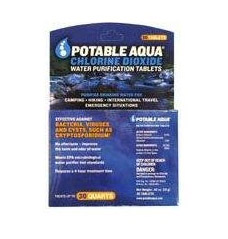 Chlorine dioxide is an effective agent in killing microbial life. It can also improve the taste and odor of water. If used with proper dosage, the chlorine taste and smell should not be offensive. You can buy chlorine tablets at camping stores or online at amazon.com. Potable Aqua Chlorine DioxideTablets are a good option, because they contain Chlorine Dioxide, making them effective against all pathogens, including Cryptosporidiosis. Read the directions on the box before using them (they can take up to 4 hours to treat your water).
Chlorine dioxide is an effective agent in killing microbial life. It can also improve the taste and odor of water. If used with proper dosage, the chlorine taste and smell should not be offensive. You can buy chlorine tablets at camping stores or online at amazon.com. Potable Aqua Chlorine DioxideTablets are a good option, because they contain Chlorine Dioxide, making them effective against all pathogens, including Cryptosporidiosis. Read the directions on the box before using them (they can take up to 4 hours to treat your water).
If you don’t have chlorine tablets, you can also use non-scented bleach. Yes, really. Household bleach is typically 5-6 percent chlorine. Make sure you do not use any scented or perfumed bleach, however. Three drops per liter of water (five if the water is very cold) and then let it sit for 30 minutes (60 minutes if the water is cold).
Iodine
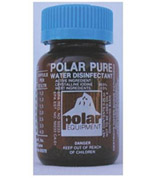 Iodine is another effective agent that can be used to disinfect water. Compared to chlorine, iodine produces a more noticeable aftertaste. One advantage, however, is you don’t need a lot of it to get the job done.
Iodine is another effective agent that can be used to disinfect water. Compared to chlorine, iodine produces a more noticeable aftertaste. One advantage, however, is you don’t need a lot of it to get the job done.
Potable Aqua Water Treatment Tablets, for instance, can treat a liter of water with one tablet. These are the same tablets that are actually endorsed by the US military and they are also commonly used by many backpackers and campers.
Keep in mind that some people are allergic to iodine. If this is the case, use one of the other treatment methods. Iodine is light sensitive and it should always be kept in a dark bottle. Also, iodine is not 100% effective against Cryptosporidiosis. Iodine tip: to remove the foul taste of Iodine add 50mg of vitamin C to the treated water. It will remove the iodine smell and taste.
UV Light Treatment
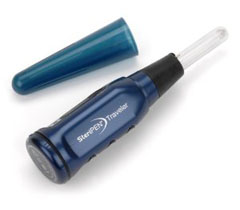 UV light destroys the DNA of harmful organisms, making your water safe to drink. There are many advantages to UV treatment. For one, there is no need to wait a substantial amount of time. Sixteen ounces of water can be treated in less than a minute. Another advantage is that there is no chemical aftertaste (and there is the fact that you don’t have to ingest any chemicals of course).
UV light destroys the DNA of harmful organisms, making your water safe to drink. There are many advantages to UV treatment. For one, there is no need to wait a substantial amount of time. Sixteen ounces of water can be treated in less than a minute. Another advantage is that there is no chemical aftertaste (and there is the fact that you don’t have to ingest any chemicals of course).
We recommend the SteriPEN Adventurer Opti Personal Handheld UV Water Purifier for UV treatment. It is compact and easy to use. Put the purifier into the water, press a button, and stir until the light turns green. It uses four AA batteries.
UV treatment, for its effectiveness and convenience, is the option we recommend. It is very important, however, that you filter your water before using UV treatment. Cloudy water or water with sediment and suspended particles, will dramatically reduce the effectiveness of UV treatment. If the water is clear, however, UV treatment can effectively neutralize everything, including viruses and Cryptosporidiosis.
For more general information on water purification and treatment, check out waterpurificationhq.com.
Have you used any of the above treatment options? Which do you prefer? Let us know in the comments. Photo credits: http://www.flickr.com/photos/indi/








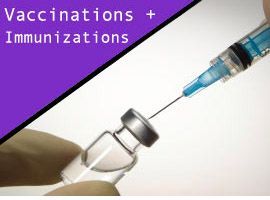
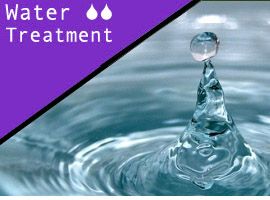
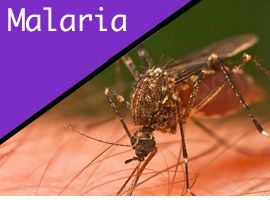
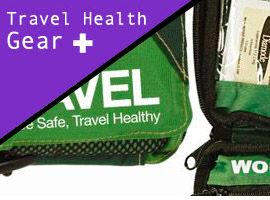
{ 8 comments… add one }